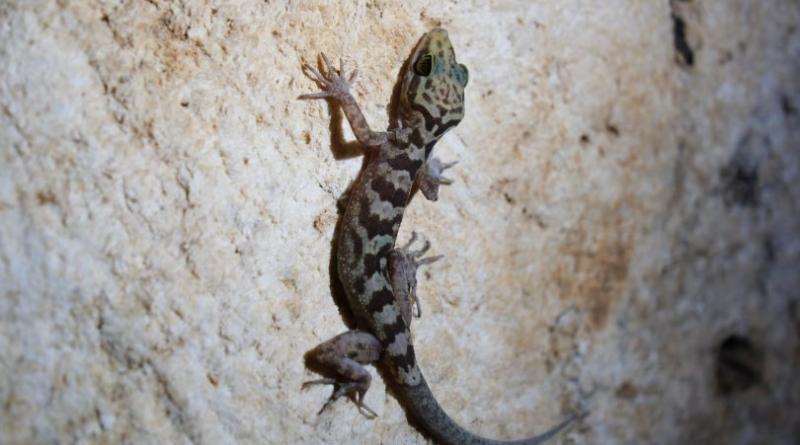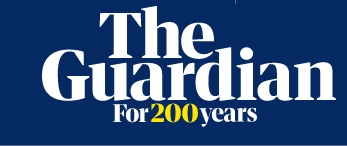The IUCN says which animals may face extinction. But is it up to the job?

Alice Hughes found the strange reptile in March. It was hanging by its long, slender fingers from the limestone wall of a cave in northern Thailand: a grey-brown gecko she believes belongs to a species unknown to science.
Hughes, a conservation biologist at the University of Hong Kong, is part of a group researching limestone systems, valuable arks of biodiversity pocked with deep caves that can shelter rare species. “Many of those species are not known to science,” she says. This was the group’s second new discovery after a neon-green cave gecko found in Myanmar in 2017.
Each discovery is a moment of wonder but one that automatically raises concerns, says Hughes. A newly discovered reptile is almost certainly rare – “otherwise it would have been described before”. The cave geckos live perhaps only in one spot and a natural disaster or the construction of a mine, a common threat across south-east Asia, could mean an evolutionary line stretching back thousands of years is extinguished.
But for each new species discovered, accessing the network of international support to protect them means negotiating what Hughes describes as an onerous and imprecise assessment process for the International Union for Conservation of Nature’s (IUCN) red list, the world’s most authoritative listing of species’ extinction risk.
A new lizard will first linger in a sort of catch-22, needing to demonstrate its rarity before getting the support it needs, yet being ineligible for funding intended to target threatened species, says Hughes. “So, all of these potentially endangered species with small ranges fall through the gaps.”
A new paper co-authored by Hughes expresses a range of concerns that some scientists and conservationists on the frontline have about the red list, accusing it of providing assessments which can be unreliable and in some cases biased, while occupying an outsize role in global decision-making.
Among the 25 authors are globally recognised academics who lead IUCN specialist groups responsible for the red list’s assessments. On the high seas, these experts say yellowfin tuna are in rude health according to IUCN assessments – and end up on dinner plates – whereas studies show key populations are teetering on the edge of collapse. Jaguars are labelled as not threatened, a blanket assessment that makes them less eligible for support but ignores vulnerable subpopulations whose unique characteristics would be lost. Bird species are listed as at low risk of extinction despite populations being unknown.
Anyone who has watched a David Attenborough documentary will probably have encountered red-list assessments, intended as a “barometer of life”, showing the status of global biodiversity. The red list sorts the species of the world into nine categories of extinction risk, from “extinct” through “endangered” to “least concern”.
Created in 1964, the list has been hailed by many as a vital resource that has acted as a catalyst for species conservation. It has, however, also been criticised by some for its slow pace of assessment and data gaps. After nearly six decades, just 2% of the world’s species have been assessed, skewing toward well-known charismatic species such as big cats and apes, research has shown. Species listed as “data deficient” are twice as likely to be threatened but are less likely to get funding compared with species that have been assessed as threatened – with some arguing such species should be automatically classified as “assumed threatened”.
The authors of the paper say they are willing to go public with criticisms that they have so far shared only in closed academic circles, some frustrated by the IUCN’s lack of progress and others compelled to act by the demands of December’s historic deal for nature, known as the Kunming-Montreal Global Biodiversity Framework (GBF). The red list is the “headline indicator” for species risk, as part of GBF’s Goal A, which includes targets to halt human-induced extinction and a tenfold reduction in extinction rates by 2050.
Andrew Gonzalez, a professor in biodiversity conservation at McGill University, says the GBF deal is the right time to take stock of the red list’s limitations as a measure of extinction and biodiversity.
“The IUCN red list has a strong reputation for being one of the few sources of information in town, so to speak,” says Gonzalez, who was not involved in the paper. “Is it a reliable way to address whether we are reducing the risk of extinction tenfold for all native wild species? The answer is no, because there are 8 million species on the planet, and it [covers] 150,000.”
While a UN global assessment report estimated a million species are threatened with extinction within decades, the red list has classified just 42,100 species as extinction-threatened. More than a quarter of all assessments are out of date, according to the IUCN’s own 10-year rule. For GBF targets set for 2030, many species will have no updates in this time, says Hughes. “Because there are all these flaws in it that only those of us on the ground are often aware of, it creates this false sense of security that we have a much better understanding of these biodiversity patterns, biodiversity threats, than is in fact the case,” says Hughes.
The paper published as a pre-print earlier this month on Authorea draws attention to how the IUCN makes assessments, in addition to its increasing use as a tool to allocate spending by frontline organisations. The assessment process relies on a combination of science and the views of specialists groups, leading to statuses “based on expert opinion, which may be biased or subjective”, the authors write. Experts meet once or twice a year on a volunteer basis, creating bureaucratic bottlenecks that mean the red list may never sustain “an ongoing and repeated assessment of the world’s threatened biodiversity”, it argues.
One recent paper found that the majority of stork species listed in the lowest category – least concern – have never received a population study, meaning population sizes and trends have not been scientifically assessed. “Today, as we stand, the red list has unfortunately become fairly unreliable. And I say this as a co-chair,” says Gopi Sundar of the IUCN stork, ibis and spoonbill specialist group.
The new paper criticising the IUCN highlights a range of issues, from underrepresenting specific threats such as mining, to outdated and imprecise geographic methods. An analysis in 2020 found that, on average, between a quarter and half of all locations where species had been recorded were outside the IUCN’s maps of species’ ranges.
For ocean experts the need for change is particularly evident, says Guillermo Ortuño-Crespo, co-chair of the IUCN high seas specialist group. The red list was primarily developed for terrestrial monitoring, later adapted for marine environments, and assessments systematically fail to reflect marine-specific threats, such as overfishing, meaning species such as yellowfin tuna are assessed as “least concern” despite Indian Ocean fisheries plunging to the brink of collapse, he says.
Jon Paul Rodriguez, chair of the IUCN Species Survival Commission, says that while it does not contain all the world’s species, the red list is the most complete existing source of information on the extinction risk of species globally.
“Numerous species groups have been comprehensively assessed, and as such we have been able to make key findings concerning the world’s biodiversity,” he says. “For example, the IUCN Red List shows that 41% of amphibians, 27% of mammals, 21% of reptiles and 13% of birds are threatened.”
The IUCN is working with partners to address gaps in geographic and taxonomic coverage, as part of its strategic plan for 2030, he adds, but its reliance on donors means “it is a constant challenge to keep assessments current with the limited resources available”.
Rodriguez says the IUCN red list is transparent, objective and repeatable and has a built-in appeals process: “Since the Red List was first made publicly available in 1964, only a handful of petitions have been received, speaking to the robustness of the IUCN Red List process.”
Gonzalez, who is co-chair of GEO BON, a global network of thousands of researchers dedicated to improving how biodiversity is measured, agrees that the red list remains one of the few historical sources that will continue to provide “incredibly valuable” data covering the past five decades. But on its own it is not fit for the purposes it is now required to perform, he adds.
“I think it’s important that we appreciate that we’re going to transition from a set of indicators that weren’t designed for the GBF to a monitoring framework in a few years that will look much more bespoke, and we’ll have some of these issues hopefully addressed,” says Gonzalez.
Frequently updated, bottom-up data is available from around the world, says Gonzalez – from individuals observing nature, camera traps, eDNA, satellites and drones. These can give us a picture of the status of biodiversity, as well as the ability to detect change as it happens and can better guide conservation action. The IUCN is currently exploring how the red list can begin to incorporate such data, says Rodriguez.
Along with the limitations of listing itself, the authors say there is a problem with major organisations that favour funding for species in higher threatened categories.
Ruben Dario Palacio, a biologist and the paper’s lead author, found first-hand how the red list can divert attention and funding from where conservationists believe it is needed most.
His research has shed light on Colombia’s little-known yellow-headed manakin, a round, citrus-yellow bird that lives in Andean cloud forests. Palacio analysed 100 years of ornithological data to show that the species is endemic to the country and declining amid habitat loss.
When the NGO he founded, Fundación Ecotonos, received funds from the Critical Ecosystem Partnership Fund (CEPF), he was told the bird was not threatened enough for him to conduct a targeted assessment of the threats it faces.
Palacio says this was due to a flawed red list assessment – which did not assess population levels, nor explicitly consider key concerns, such as habitat fragmentation or the climate crisis. Instead of spending on the manakin, he was told the funds could go toward other species such as the Ruiz’s robber frog, a species that is already well-protected.
It was Palacio’s “Twitter rant” after this disappointment in January that struck a chord with colleagues and snowballed into the article, now incorporating diverse concerns from scientists across six continents.
The red list today is “such a powerful monopoly in conservation” that it dominates decision-making, says Palacio, despite specialised experts across the world producing bottom-up data that provides an accurate picture of needs at local level. “There are populations and entire species that will decline or disappear because we are putting uncritical faith in a single all-powerful list.”
The CEPF, which funded Palacio’s research, says it consults hundreds of the region’s experts and stakeholders in making funding decisions, including conservation scientists, NGOs, government officials and the private sector. “The view of the CEPF is that the IUCN red list and local knowledge are essential for strategic conservation,” says executive director Olivier Langrand.
“The IUCN Red List of Threatened Species has never been intended for use a sole means to set conservation priorities, as anyone who has read the Red List Categories and Criteria document will know,” adds Rodriguez.
While richer western countries direct funding via national conservation strategies and national “red lists”, the IUCN red list has become a de facto conservation priorities list in many developing countries, argue its critics. The dynamic between global north and south has been historically underappreciated, says Hughes, with most specialist groups still conducted in English or another UN language, leaving voices across Asia in particular among those likely to get lost.
Progress has, thankfully, happened fast from a time where the word of white scientists was often taken more seriously than that of scientists of colour, says Sundar. However, IUCN assessments continue to take lessons learned in Europe or America, and impose them worldwide “We are now seeing what can only be called a colonial notion of conservation,” he says.
For example, farms and cities are often mapped as dominant threats to biodiversity, says Sundar, despite farming practices varying widely across the global south, with many farms supporting abundant wildlife.
While countries at the frontline of conservation are producing robust research, neglecting this in favour of western-based assumptions “is neither scientific nor useful”, he adds, and has resulted in a red list that today cannot be relied on to be “for a huge number of species”.
The IUCN says the red list incorporates data from a broad range of sources, including from Indigenous peoples, citizen scientists and local communities. “We have taken explicit measures to improve global participation,” says Rodriguez.
The 25 authors share many concerns and offer a 19-point summary for improving conservation efforts. But they diverge widely in their prescriptions for how the IUCN red list’s role should change.
Some want to see conservation move on entirely from its longstanding focus on species extinction, toward protecting species that are still abundant, preventing the loss of local populations, and directly protecting habitats – such as the gecko’s limestone caves – whether or not it will threaten the survival of a species. Others simply want the red list to update its methods and funders to balance its assessment against local expertise.
“Let’s say the IUCN red list disappears tomorrow. What instrument, what tool are we going to use to see if we’ve met our goals on threats to biodiversity?” says Ortuño-Crespo. “I think the best thing that we could do at this stage is have an honest, open conversation about what works really well on the IUCN red list and what works terribly. Just lay it all out. No judgment, no egos.”
Find more age of extinction coverage here, and follow biodiversity reporters Phoebe Weston and Patrick Greenfield on X (formerly known as Twitter) for all the latest news and features
Photograph: Ada Chornelia and Alice Hughes






